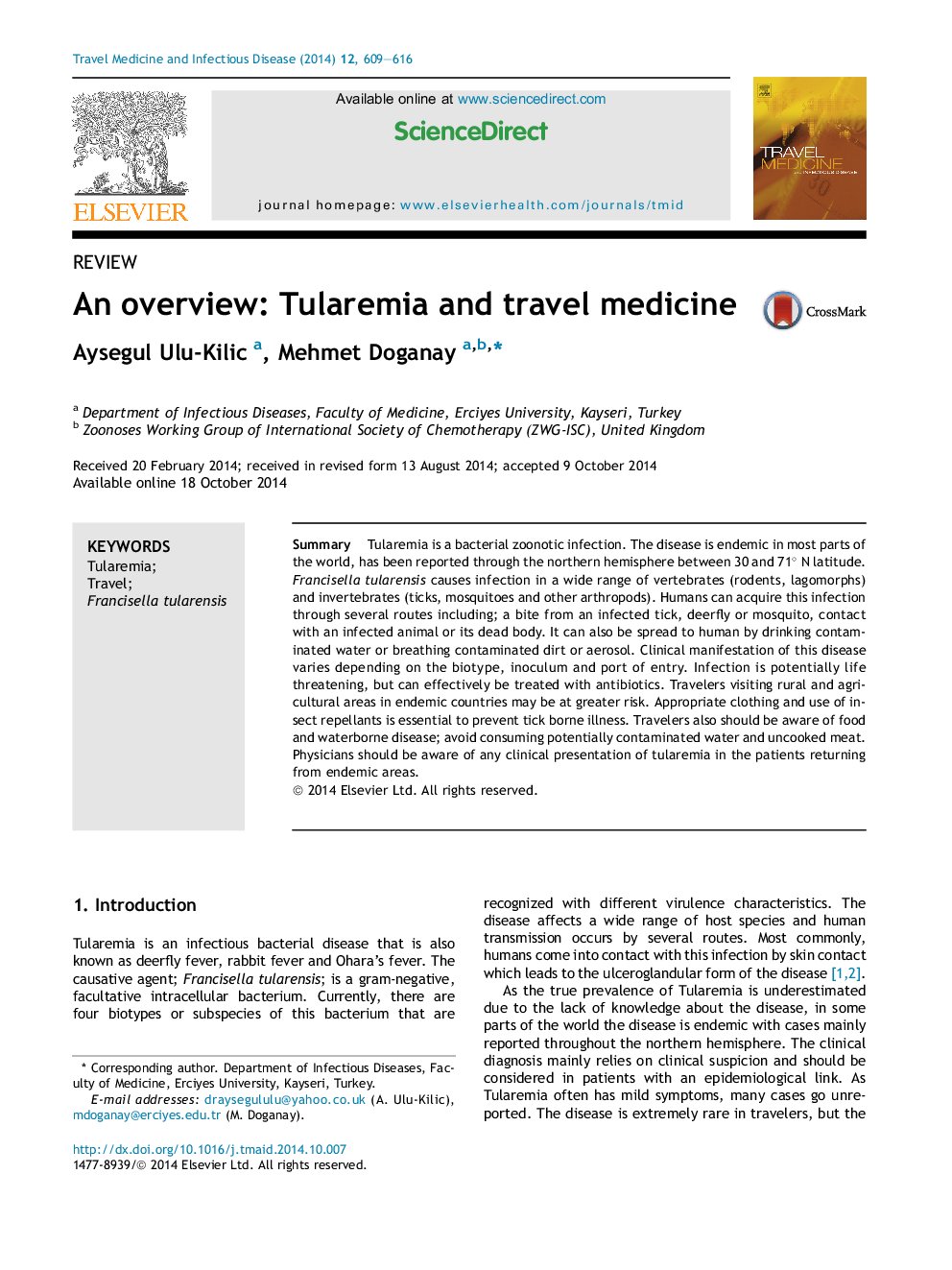| Article ID | Journal | Published Year | Pages | File Type |
|---|---|---|---|---|
| 3392862 | Travel Medicine and Infectious Disease | 2014 | 8 Pages |
SummaryTularemia is a bacterial zoonotic infection. The disease is endemic in most parts of the world, has been reported through the northern hemisphere between 30 and 71° N latitude. Francisella tularensis causes infection in a wide range of vertebrates (rodents, lagomorphs) and invertebrates (ticks, mosquitoes and other arthropods). Humans can acquire this infection through several routes including; a bite from an infected tick, deerfly or mosquito, contact with an infected animal or its dead body. It can also be spread to human by drinking contaminated water or breathing contaminated dirt or aerosol. Clinical manifestation of this disease varies depending on the biotype, inoculum and port of entry. Infection is potentially life threatening, but can effectively be treated with antibiotics. Travelers visiting rural and agricultural areas in endemic countries may be at greater risk. Appropriate clothing and use of insect repellants is essential to prevent tick borne illness. Travelers also should be aware of food and waterborne disease; avoid consuming potentially contaminated water and uncooked meat. Physicians should be aware of any clinical presentation of tularemia in the patients returning from endemic areas.
